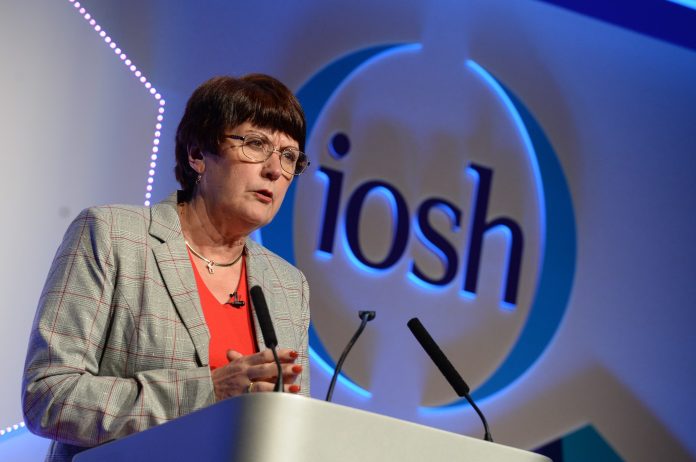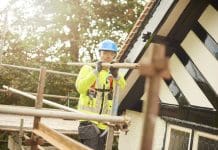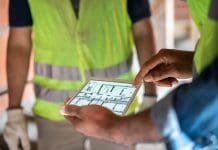Dame Judith Hackitt, author of the independent review of Building Regulation and Fire Safety, has warned that without changes to the regulatory system, another tragedy like the Grenfell Tower fire cannot be ruled out
It is impossible to rule out another “catastrophic event” like the Grenfell Tower fire if changes aren’t made to the regulatory system covering buildings and there is a cultural change throughout the construction industry.
That was the stark message Dame Judith Hackitt, the author of the independent review of Building Regulations and fire safety commissioned by the government in the wake of Grenfell, delivered to delegates at the Institution of Occupational Health & Safety’s annual international conference in September.
The Grenfell Tower fire claimed the lives of 72 people and injured 70 others.
The blaze started in the early hours of 14 June 2017 in the kitchen of a fourth floor flat and rapidly spread up the outside of the building, engulfing all four faces of the tower. In her report to the Grenfell Public Inquiry, fire safety expert Dr Barbara Lane said the fire spread “primarily along the cladding above and below window lines, the infill panels between windows, aided by the materials surrounding the windows and the materials surrounding the cavity formed between the new and old infill panels”.
In his evidence to the inquiry, Professor Luke Bisby said he “strongly supports” the theory that highly combustible polyethylene polymer filler used in the cladding was the primary cause of the fire spreading.
Dame Judith’s final report, which was published in May, did not call for a specific ban on flammable cladding but instead stressed the need for a “radical rethink” of the entire system of building regulation and fire safety.
“This is most definitely not just a question of the specification of cladding systems, but of an industry that has not reflected and learned for itself, nor looked to other sectors,” she wrote.
“The debate continues to run about whether or not aluminium cladding is used for thermal insulation, weather proofing, or as an integral part of the fabric, fire safety and integrity of the building. This illustrates the siloed thinking that is part of the problem we must address. It is clear that in this type of debate the basic intent of fire safety has been lost.”
In her speech to IOSH 2018, which took place at the International Convention Centre in Birmingham on 17-18 September, Dame Judith again stressed that Grenfell represented a systemic failure, rather than the failure of a specific product, and only integrated, systemic change will improve standards.
“When I looked from the outside into standards in the built environment, what I encountered was truly shocking. The system for fire safety in high-rise and complex buildings was weak and ineffective,” she told delegates.
“People actually said things like ‘we always knew something like this would happen’. They knew the system wasn’t working but didn’t know how to fix it. There was a race to the bottom. Companies were looking to do things as cheap as possible, getting around the rules. It was about cost, not quality.”
“Unless we fix the system, we have no way of guaranteeing that there won’t be another catastrophic event.”
Dame Judith called for cultural change within the industry to take place as soon as possible, while the horrors of Grenfell are still fresh in people’s minds. As part of that change, construction companies should have the same sense of care for those using buildings as it does for those involved their construction.
“We need to get to a point where people who construct a building are as responsible for those who use it over the next 10 or 20 years as they are for employee safety,” she said.
“What are we are calling for is collaboration and joined-up thinking across the build environment sector, not self-interested groups protecting their own turf, something I have seen a lot of.”
Dame Judith’s report included 53 recommendations aimed at creating a stronger and tougher – but easier to follow – regulatory system.
Proposals include the creation of a Joint Competent Authority, comprising Local Authority Building Standards, fire & rescue authorities and the Health & Safety Executive to oversee better management of safety risks in high-rise buildings across their entire lifecycle; a series of gateway points that require duty-holders to demonstrate their plans are detailed and robust; and a stronger voice for tenants who have safety concerns about their building, with a clear route of escalation and redress to an independent body.
Dame Judith told the conference there also needs to be stronger powers of enforcement to provide a greater deterrent to cost-cutting over safety.
“Right now, the level of penalties when people are caught out is not strong enough. There is no deterrent,” she said.
“We also need a system where people can raise concerns in the knowledge they will be acted on. The same goes for within the industry – for example, we don’t want people thinking they don’t know who to tell if there are concerns.”














